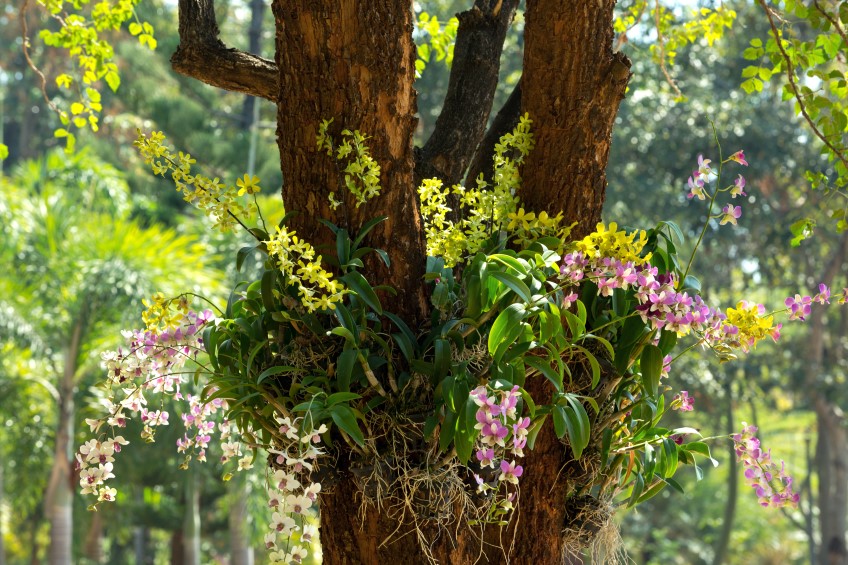Inspired by a trip to Singapore and the gorgeous Gardens of the Bay, Graham decided to create an orchid
tree.
And you can have your orchid tree too. Just follow Graham's directions below and create a little piece of Singapore in your garden.

Photo - jeep2499/Shutterstock.com
Many species of orchids will naturalise when mounted on trees, as they are epiphytic in the wild, meaning that they grow naturally without soil. Orchids
prefer tropical and subtropical climates, but most orchids can be grown outdoors in any warm, and frost-free environment. We chose yellow dancing
ladies (Oncidiums sp.) and pink soft cane dendrobiums. Dancing ladies flower from autumn to spring; soft cane dendrobiums need plenty of light
over summer and flower in spring.
Here’s what Graham did to make his orchid tree:
1.Find a suitable tree with multiple stems. Rough bark is best as the roots will anchor themselves easily. Orchids prefer filtered sunlight under a tree
canopy, but won’t flower in dense shade.
2.Choose tree-dwelling orchids. Take the orchids out from their pots, shake off all the orchid bark and once the roots are exposed give them a trim. Moisten
sphagnum moss and wrap the orchid roots in the moss. Place them in the crooks of branches and along the stems of the tree. Use black cotton fabric
or old pantyhose to secure the plant tightly.
3.Keep the sphagnum moist through summer by spraying in the morning, which will also increase the humidity throughout the day.
4.Water dancing ladies year-round, but stop watering soft cane dendrobiums over winter to give the plants a rest.
5.During the growing season (spring and summer), apply an orchid fertiliser such as Yates Orchid Food or Neutrog Strike Back for Orchids, which are designed
to promote flowering. A liquid fertiliser such as Campbell’s Orchid Special Fertiliser B can be applied throughout the remainder of the year, every
7-14 days or when the plant needs watering.